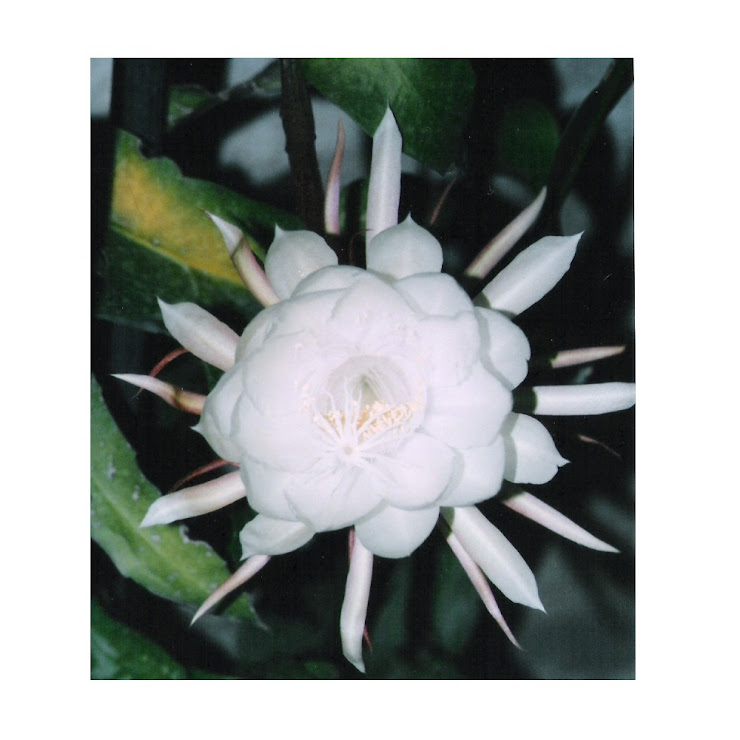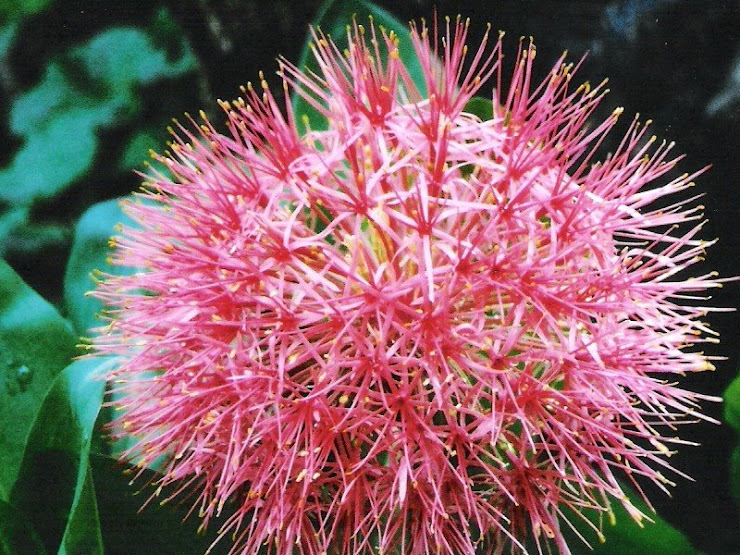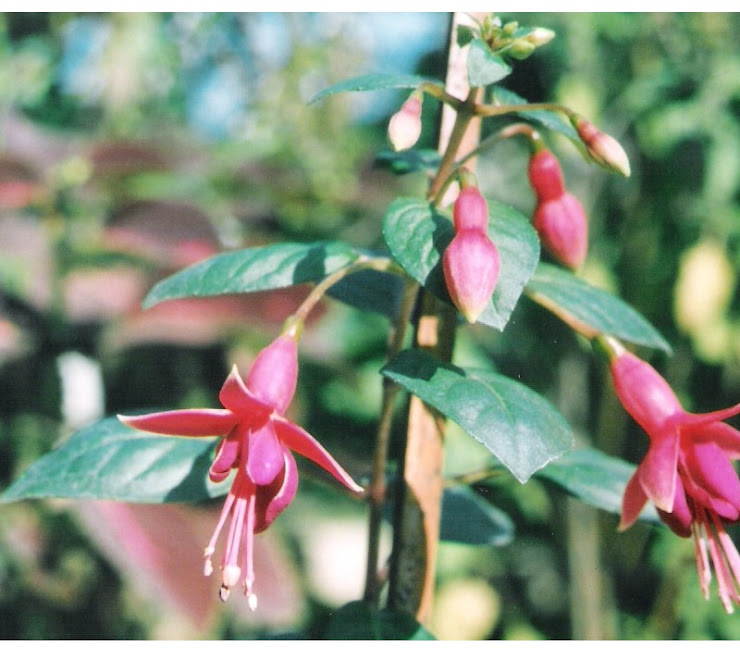



Roses
The Rose, belong to the shrub family and is called the queen of flowers and is known for their beauty and fragrance. This flowering shrub is mainly valued for their beautiful colour flowers and fragrance. It has about 150 species. Many thousands of cultivars have been developed from these species through cross breeding, selection and hybridization and they vary widely from miniatures under 30 cm tall to climbing types that climb up to 15 meter high.
Many writers, artists, and composers have always praised the rose and have rightly called it the flowers of love. It was the Greek poet Sappho who coined the title 'Queen' to the flower over 2500 years ago. In the early Roman culture, Roses were a part of upper class life.
The Rose, belong to the shrub family and is called the queen of flowers and is known for their beauty and fragrance. This flowering shrub is mainly valued for their beautiful colour flowers and fragrance. It has about 150 species. Many thousands of cultivars have been developed from these species through cross breeding, selection and hybridization and they vary widely from miniatures under 30 cm tall to climbing types that climb up to 15 meter high.
Many writers, artists, and composers have always praised the rose and have rightly called it the flowers of love. It was the Greek poet Sappho who coined the title 'Queen' to the flower over 2500 years ago. In the early Roman culture, Roses were a part of upper class life.
The decorations for parties, weddings, funerals, festivals and on statues and monuments, chariots and shields were adorned with roses. People would bathe in rose water, wear rose garlands, make confections and wine with rose petals. Even medications were prepared from rose petals, fruits (hips) and seeds.
The cultivars are mainly covered under the heading of Old Garden roses and the Modern roses. In a garden, roses can be planted as borders, hedges, backgrounds, and specimen plants. They can be planted not only in the open ground but in pots and raised beds on your verandah, terrace or balcony.
The cultivars are mainly covered under the heading of Old Garden roses and the Modern roses. In a garden, roses can be planted as borders, hedges, backgrounds, and specimen plants. They can be planted not only in the open ground but in pots and raised beds on your verandah, terrace or balcony.
PlantingRoses grow best in soil with a pH 6.5 (slightly acidic) and 7.0. The soil structure should be such that it remains moist for most part of the day and at the same time it should be well-drained. Avoid planting the rose shrub in excessively sandy or clayey soils. Sand should be added if the soil is extremely moist/ clayey. Add peat moss, dead leaves or some other organic sources to the soil before planting the rose. The soil should be prepared at
least a month in advance of the planting.
least a month in advance of the planting.
The best time to plant bare root roses is in January or February up to March. October end. November planting can also be successful if your area does not have severe winters. Potted roses that it can be planted at almost any time. Before planting, potted plants can be placed outdoors and watered for some time to make the roots and canes moist. Potted roses need to be pruned when planted. In order to restore the bare root plant, it should be placed in a bucket of water for 1 2-24 hours before planting.
Location
Roses flower best in sunny locations. Most types need at least 6 hours of direct sunshine daily, preferably in the morning for flowering and growth. Try to select a planting location that is not shaded by buildings, trees etc.
Dig a trench of 40 cm deep and 50 cm wide with one side slanted. Soak the area where you intend plant the rose to make the soil more manageable. Small roses need a hole not much more than 40 cm across. Shrub roses need holes about 90to 100 cm across. Climbers planted along a wall may need holes which are a little bigger than this. Before planting a bare root plant trim off any long or damaged roots. Place the juncture of roots and stem just below the soil surface. If there is a bud union, it should be about 2.5 cm above the soil. Fill the hole with soil and press it firmly down. Water thoroughly after planting.
Propagation
Location
Roses flower best in sunny locations. Most types need at least 6 hours of direct sunshine daily, preferably in the morning for flowering and growth. Try to select a planting location that is not shaded by buildings, trees etc.
Dig a trench of 40 cm deep and 50 cm wide with one side slanted. Soak the area where you intend plant the rose to make the soil more manageable. Small roses need a hole not much more than 40 cm across. Shrub roses need holes about 90to 100 cm across. Climbers planted along a wall may need holes which are a little bigger than this. Before planting a bare root plant trim off any long or damaged roots. Place the juncture of roots and stem just below the soil surface. If there is a bud union, it should be about 2.5 cm above the soil. Fill the hole with soil and press it firmly down. Water thoroughly after planting.
Propagation
Propagation can be done from cuttings, by budding.
Budding: Make a 2.5 cm long T shaped cut in bark of under stock, an inch or two above soil level. For bud wood, choose a stem that has just flowered. Slice under bud to get a 2.5 cm bark with bud in it. Peel back under stock bark at T cut, insert bud shield. Bud should be at least 0.5 cm below top of T. Firmly tie bud in place with soft cotton thread (used by the plumbers).Strip wrapping both above and below it but leaving bud exposed. When bud sends out a strong new shoot the next spring, cut of under stock growth about 1 inch above the shoot. If the bud is plump and green, your new rose bush is born.
Cuttings:you can start cuttings after the first bloom. Cuttings should be 15 to 20 cm Long. Cut a newly flowered stem below a leaf, remove lower leaves and plant in sandy potting mix. Remember that the cuttings should not be allowed to dry out. Keep it moist/humid by covering it with a plastic bag. The bag should be removed once the new growth emerges.
Caring for the roses
Pruning: Pruning involves removing any damaged, diseased or dead wood of a rose bush to improve the appearance, stimulate growth and control pests and diseases. Improper/heavy pruning can affect blooming. The how and when of pruning roses is determined by the type of rose. Here we are given few basic steps to prune your rose plant.
Plants are ready to be pruned, when the bush becomes leafless or with a few leaves during the dormant season. Use a sharp knife or pruning shears and remember one thing to cut approximately 1 cm above an outward facing bud. Remove all old, damaged and diseased canes. Take out stems that cross through the centre and thin out the center of the plant. Where canes cross and rub against each other prune out the less healthy cane. Shorten the remaining healthy growth by 1/3rd of its length. Apply a borduix mixture paste to the cuts in order to avoid damage by insects and diseases.
Fertilistion
Budding: Make a 2.5 cm long T shaped cut in bark of under stock, an inch or two above soil level. For bud wood, choose a stem that has just flowered. Slice under bud to get a 2.5 cm bark with bud in it. Peel back under stock bark at T cut, insert bud shield. Bud should be at least 0.5 cm below top of T. Firmly tie bud in place with soft cotton thread (used by the plumbers).Strip wrapping both above and below it but leaving bud exposed. When bud sends out a strong new shoot the next spring, cut of under stock growth about 1 inch above the shoot. If the bud is plump and green, your new rose bush is born.
Cuttings:you can start cuttings after the first bloom. Cuttings should be 15 to 20 cm Long. Cut a newly flowered stem below a leaf, remove lower leaves and plant in sandy potting mix. Remember that the cuttings should not be allowed to dry out. Keep it moist/humid by covering it with a plastic bag. The bag should be removed once the new growth emerges.
Caring for the roses
Pruning: Pruning involves removing any damaged, diseased or dead wood of a rose bush to improve the appearance, stimulate growth and control pests and diseases. Improper/heavy pruning can affect blooming. The how and when of pruning roses is determined by the type of rose. Here we are given few basic steps to prune your rose plant.
Plants are ready to be pruned, when the bush becomes leafless or with a few leaves during the dormant season. Use a sharp knife or pruning shears and remember one thing to cut approximately 1 cm above an outward facing bud. Remove all old, damaged and diseased canes. Take out stems that cross through the centre and thin out the center of the plant. Where canes cross and rub against each other prune out the less healthy cane. Shorten the remaining healthy growth by 1/3rd of its length. Apply a borduix mixture paste to the cuts in order to avoid damage by insects and diseases.
Fertilistion
Although some roses may flourish without fertilization, they need nutrients for peak performance. So it is usually necessary to apply fertilizer.
The three basic nutrients for healthy growth are Nitrogen, Phosphorous, and Potassium. Do not fertilize newly planted roses until after the first bloom. If you want to avoid using chemical fertilisers you can try these organic alternatives: bone meal, compost, fish emulsion, manure, and seaweed or soybean meal. Apply fertiliserhen you see new emerging growth. Fertilisea second time when the first flower buds set in. Apply a final fertilizer after two months.
Watering
The three basic nutrients for healthy growth are Nitrogen, Phosphorous, and Potassium. Do not fertilize newly planted roses until after the first bloom. If you want to avoid using chemical fertilisers you can try these organic alternatives: bone meal, compost, fish emulsion, manure, and seaweed or soybean meal. Apply fertiliserhen you see new emerging growth. Fertilisea second time when the first flower buds set in. Apply a final fertilizer after two months.
Watering
The amount and frequency of application will depend on soil type, bush size, and the rainfall in your area. When watering roses, be sure to soak the soil well; they need more than just light sprays of water. Washing the leaves every week or so will make the plants healthy. This will also wash away some insect pests. Some other tips include watering in the morning, avoid letting the water come into contact with the leaves and blooms, and providing mulch so that the soil retains its moisture. The uses of mulch around roses help to retain soil moisture and help retard weed growth.
Diseases and Pest Control
Diseases and Pest Control
The rose plants are mainly affected by three types of diseases - Black-spot, Powdery and Rust. For black spot you should thoroughly clean up debris at pruning time, then apply the Borduixmixture to the cuts. Resistance varies from one rose variety to the next for powdery mildew. Garden sanitation is best for rust and can be controlled with foliage sprays.
The pests that usually attack the roses are - Aphids, Thrips, Beetles, Borers, Rose midge, caterpillars, Worms and Mites. Natural enemies like lady bugs help keep aphids in check. They effect growth and can deform leaves. Hand picking is the safest control for Beetles, Caterpillars and worms and Borers. To control mites spraying water is the simplest remedial measure. Use a nozzle that produces fine spray, thoroughly wash off the undersides of the leaves. Repeat this method at least three times. Thrips deform flower petals. To control thrips use chemical spray plants always from above, making certain to cover all the leaves.
Types of Roses
Hybrid
Hybrid roses dominate modern rose gardens and have long, pointed buds. They grow up to 100 to 150 cmtall and produce semi double to double flowers, repeatedly during the season. Examples are Paradise, Peace, Polarstern, Pristine etc.
Climbing Roses
The pests that usually attack the roses are - Aphids, Thrips, Beetles, Borers, Rose midge, caterpillars, Worms and Mites. Natural enemies like lady bugs help keep aphids in check. They effect growth and can deform leaves. Hand picking is the safest control for Beetles, Caterpillars and worms and Borers. To control mites spraying water is the simplest remedial measure. Use a nozzle that produces fine spray, thoroughly wash off the undersides of the leaves. Repeat this method at least three times. Thrips deform flower petals. To control thrips use chemical spray plants always from above, making certain to cover all the leaves.
Types of Roses
Hybrid
Hybrid roses dominate modern rose gardens and have long, pointed buds. They grow up to 100 to 150 cmtall and produce semi double to double flowers, repeatedly during the season. Examples are Paradise, Peace, Polarstern, Pristine etc.
Climbing Roses
Tall plants generally grow from 2 to 6 meter high. They are grown on walls & fences, trellises. Climber flowers are large with only a few per cluster. They require very little pruning, and nearly all are repeat bloomers viz Blaze, Don Juan, Dortmund, Climbing Iceberg etc
Miniature Roses
Miniature Roses
These rose plants grow up to 60 cmor less in height with small blooms. Colour range includes all the shades found in modern hybrid teas, in flowers that range from informal to hybrid tea style. Miniatures are grown on their own root. Some of the Miniatures are Rainbow's End, Red Beauty, Rise 'N' Shine. There are certain types of climbing miniatures derived from crosses of miniatures with climbing roses.
Shrub Rose
Shrub Rose
Shrub roses are hardy, have a tolerance to less than optimum growing conditions, and needs only low maintenance. Flower size varies from small to large, can be single or double. This plant may be 2to 3 meter tall and bloom all season long. You can use them as borders, hedges etc. Some of the common varieties are - Bonica,Frau Dogmar Hartopp, Abraham Darby, Golden Wings etc.
Floribundas
Floribundas
Floribundas are bushy plants that grow from 60 to 120 cm high. Individual flowers may be single or double and are borne in clusters. Good for borders or containers, floribundas provide an almost constant show of color - Impatient, Angel Face, Ivory Fashion
Grandifloras
Grandifloras
These are tall elegant plants 5 to 8 feet high. Grandiflorars bloom repeatedly during the season. This type has been derived from crosses between Hybrid and Floribundas. Medium to large flowers usually comes in small clusters - Aquarius, Gold Medal, Pink Parfait etc.
Standard or Tree Roses
Tree roses or standard roses are small plants from 60o 90 cm high. This is a bush rose budded on to a under stock stem to produce a rose tree. The standard tree rose has full-sized flowers. Many popular rose varieties are available in tree form.
Standard or Tree Roses
Tree roses or standard roses are small plants from 60o 90 cm high. This is a bush rose budded on to a under stock stem to produce a rose tree. The standard tree rose has full-sized flowers. Many popular rose varieties are available in tree form.







No comments:
Post a Comment